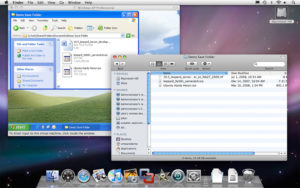

- VMWARE FUSION PRO OVA INSTALL
- VMWARE FUSION PRO OVA LICENSE
- VMWARE FUSION PRO OVA PROFESSIONAL
- VMWARE FUSION PRO OVA DOWNLOAD
- VMWARE FUSION PRO OVA WINDOWS
Under Windows, you can use a command-line program like certutil which is installed as part of Certificate Services to verify that your download did not get corrupted.
VMWARE FUSION PRO OVA WINDOWS
USING THE KALI VM UNDER WINDOWS Verifying the Download Integrity This Kali VM has the following credentials: Please visit the following URL to download the Kali VM:
VMWARE FUSION PRO OVA LICENSE
Windows and Linux users can use either VMware Workstation or the free VMware Workstation Player, whereas macOS users will require VMware Fusion.įree trials are available for both Workstation and Fusion if you do not already have a license for them. The Kali VM we recommend in this article is built for use with VMware products. extraConfig: strongly recommend that all OffSec learners use the Kali VMware image for the most streamlined experience. For us it looks something like this: ovftool \ As such we find it a very useful property when creating docker swarms.Ĭertainly it is possible to use the ovftool on MacOS to deploy to VMWareFusion locally using this property.
VMWARE FUSION PRO OVA INSTALL
Ideally this injects all aspects of a machine’s configuration in one shot with no subsequent need to install anything locally and as such creating disposable servers that suit a strict purpose. ova just be repackaged so that it works properly? Is it even ready for the base64 string property is meant to be the encoded ignition file produced by the fcct transpiler. I have also tried to use the –allowExtraConfig switch and had no luck. I have followed the example set here:: no luck.

To replace the Property stanza from the original desc.ovf: prop:ovf:key="$PutTheBase64StringofTheIgnitionFileHere." ^ It appears that you simply need to include this switch in the ovftool command: "C:\Program Files (x86)\VMware\VMware OVF Tool\ovftool.exe" ^ The new ovftool includes an argument that supports the Property tag when uploading the OVF file directly to the ESXi server. However, according to VirtualGhetto, there is a workaround: –X:injectOvfEnv. I could manually remove those elements, but then how do I authenticate? I do not want to use pxe in any way.Īpparently the problem with the Property tag not being supported is due to uploading the OVF directly onto the ESXi server, rather than using a vCenter server to broker it. However, I still run into the exact same issue with line 89 when I try to deploy that new. ova file, and it completed the extraction without errors. ova (using tar format) which I named desc.ova. That naming convention apparently causes an issue because I extracted those two files, then used 7zip to create a new. One thing that I found out is that the files were packaged incorrectly. I think the net net would be that the one thing wrong with the current ova that MUST be fixed is simply the size? I’ll happily do the grunt work of creating the issue in git once I confirm this. Is there something else wrong with these properties? So I would expect these to be in the OVF file right? I have found that these are successfully passed into the VM as it is created providing you use the -allowExtraConfig switch on the ovftool. The guest info properties are very similar to those that existed on CL and are the means to pass in the ignition file data.

So whatever automated process Fedora is using to generate this ova is not working properly. Once I do all this, I can get a valid vmx file that I can use with my packer build.Ĭompare this to the 1688.5.3.ova for the pre-fedora CoreOS and that ova works just fine. So if you really needed those to be set on the vmx file, you have to edit the resultant vmx file yourself to add them. However, ovftool messes this up and does not propagate those properties to the resultant vmx file. In order for ovftool to build, these need to be specified using the -prop switch. So what is the deal with with the Property error? The ovf has two properties which are marked as required:
VMWARE FUSION PRO OVA PROFESSIONAL
I am having this same issue with VMWare Fusion Professional Version 11.5.1 (15018442) using 31.20200127.3.0.ova for Fedora CoreOS.


 0 kommentar(er)
0 kommentar(er)
